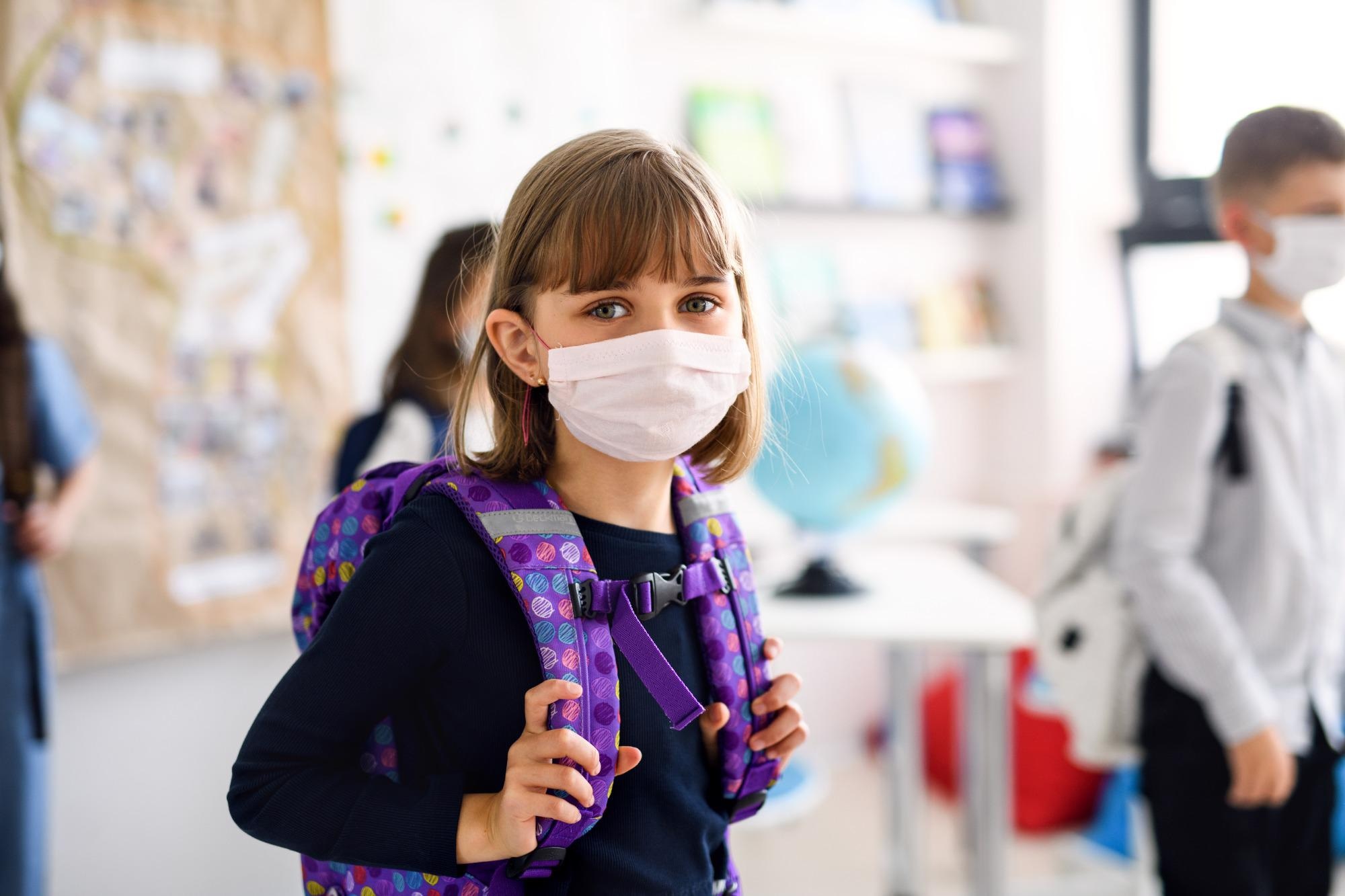It is important to prevent transmission of the highly contagious severe acute respiratory syndrome coronavirus-2 (SARS-CoV-2) virus, the causal agent of the coronavirus disease 2019 (COVID-19) pandemic. Therefore, scientists and policymakers have formulated many strategies for various settings, e.g., schools, offices, public places, etc., to stop the further spread of the disease, which will invariably help contain the pandemic.
 Study: Ventilation Improvement Strategies Among K–12 Public Schools — The National School COVID-19 Prevention Study, United States, February 14–March 27, 2022. Image Credit: Halfpoint / Shutterstock
Study: Ventilation Improvement Strategies Among K–12 Public Schools — The National School COVID-19 Prevention Study, United States, February 14–March 27, 2022. Image Credit: Halfpoint / Shutterstock
National School COVID-19 Prevention Study
The National School COVID-19 Prevention Study (NSCPS) is an ongoing longitudinal, population-based study that focuses on COVID-19 preventive strategies and assesses its effectiveness in the U.S. K–12 public schools. This study includes all public schools in the fifty states and the District of Columbia. It has also used Common Core Data from the National Center for Education Statistics (NCES) and the Market Data Retrieval database. In addition, scientists also used a web-based survey that included school administrators (e.g., principals) and nurses involved in designing COVID-19 prevention strategies at schools. This survey was initiated at the beginning of summer 2021.
Recently, Centres for Disease Control and Prevention (CDC) evaluated the aforementioned data on ventilation improvement strategies implemented in kindergarten through grade 12 (K–12) public schools in the United States. They evaluated data between February 14 and March 27, 2022 (fourth wave of COVID-19), obtained from the National School COVID-19 Prevention Study (NSCPS), which contained information from 420 schools. This study is published in the Morbidity and Mortality Weekly Report.
Assessment of CDC on Ventilation Improvement Strategies in K-12 Schools
Scientists stated that effective COVID-19 prevention measures in K–12 schools require multi-component prevention strategies, which involve the ventilation system of school buildings and school-based transportation. Improved ventilation can lower the risk of COVID-19 infection by decreasing the concentration of infectious aerosol and the period of exposure to the potential viral component. Apart from lowering the risk of COVID-19 incidence, a proper ventilation system also offers better respiratory health and reduced allergy symptoms.
Although CDC’s COVID-19 guidance for schools included various strategies to improve the ventilation system, only some were found to be implemented commonly. The current study examined eleven ventilation improvement strategies associated with schools and school-based transportation. Among these strategies, CDC observed that the most frequently implemented ventilation improvement strategies in schools were those that involved low cost. Some of these strategies were relocating activities outdoors, opening doors or windows when possible, and properly inspecting and validating existing heating, ventilation, and air conditioning (HVAC) systems.
The less frequently implemented strategies involved installing portable HEPA filtration systems in classrooms or eating areas. A very small number of schools adopted resource-intensive strategies, e.g., new installation of high-efficiency particulate air (HEPA) filtration systems in classrooms and eating areas and replacing or upgrading HVAC systems.
City schools were less likely to open windows even when it was perfectly safe to do, compared to schools situated in suburban, town, and rural areas. Similarly, city schools were less likely to open windows on school buses than rural schools. Unsurprisingly, schools situated in rural or mid-poverty-level areas were found to be less inclined to implement resource-intensive strategies. However, these schools can utilize available federal resources to improve their ventilation system. Scientists stated that ensuring the implementation of a proper ventilation system could significantly reduce SARS-CoV-2 transmission in schools.
CDC observed that six ventilation strategies differed by school poverty level. For instance, compared to mid-poverty schools, low-poverty schools were more likely to inspect and validate existing HVAC systems, relocate activities outdoors when possible, replace or upgrade HVAC systems, and enhance ventilation in eating areas for students. The current study also observed that mid-poverty schools were less inclined to use portable HEPA filtration systems in classrooms or high-risk areas compared to low-poverty and high-poverty schools.
Mid-poverty level schools are less likely to implement various strategies, compared to higher poverty schools, because of their inexperience in accessing and using federal funds. On the other hand, lower poverty schools might be able to implement many of the strategies because they are self-sufficient and do not require government support.
Limitations of this Study
One of the limitations of this study is that the implementation of ventilation improvement strategies was assessed based on a self-reported survey, and some responses could be biased. Assessment of the knowledge and training of the persons who participated in the survey was not confirmed. This study also fails to account for the fact that ventilation varies with seasons, building type, and environment.
Conclusion
The current study highlighted affordable strategies that were easily implemented in schools at all poverty levels. HVAC and HEPA filtration systems were used in the majority of schools, which were found to be regularly inspected and validated. According to CDC, ventilation plays a vital role in reducing COVID-19 spread in school settings. Therefore, ensuring proper ventilation could help prevent SARS-CoV-2 transmission in schools.